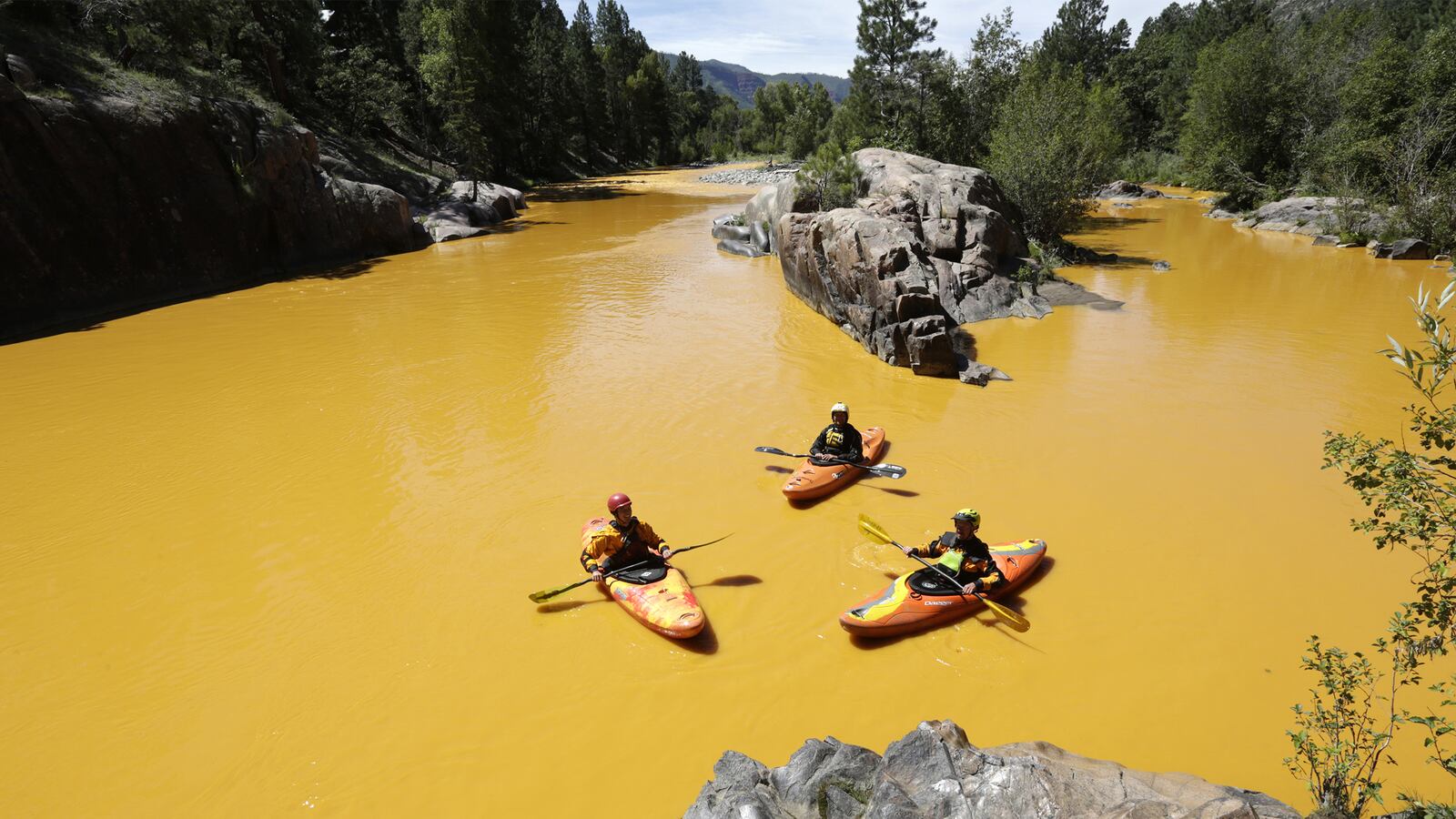For most Americans, the third week of December is about wrapping up Christmas shopping and prepping for a whirlwind of family gatherings. But for the leaders of the Navajo Nation, it’s about something much heavier: suicide prevention.
Russell Begaye and Jonathan Nez, Navajo Nation’s president and vice president, respectively, issued an executive order earlier that month designating the third week of December and one week in June for focusing on preventing suicide after a recent spate of deaths rocked the tribe.
While suicide has long taken a disproportionate number of Native American lives, Begaye said in a recent interview with The Daily Beast that the spike in his community is new, and pointed to an unusual potential factor in the uptick: a destructive wastewater spill this past summer that impacted Navajo lands.
Begaye told The Daily Beast he was concerned that the destruction caused by the Colorado’s Gold King Mine spill last August may be contributing to the suicide uptick and that the drawn-out clean-up efforts exacerbate the struggles that members of his community already face.
He added that the Environmental Protection Agency’s response to the disaster—which he characterized as inefficient and counter-productive—added additional stress to a community already on edge.
“One of the things that they seemingly do is that they wait you out,” he told The Daily Beast. “I mean, they—they’ll say all the nice things, all the right things. They’ll put the proposals on the table but you know that there’s no real action, there’s no real meat behind what they say.”
The disaster happened on Aug. 5 when EPA personnel and contractors—ironically enough—were trying to clean out an abandoned mine. They accidentally broke a dam, spilling millions of gallons of wastewater into Colorado’s Animas River. The spill turned the river a mustard yellow color and caused widespread contamination.
This isn’t the first time Begaye has raised the possibility that the river damage has led the Navajo to take their lives.
In testimony at a joint hearing before two House committees last year, he said the spill had compounded his people’s “already significant historical trauma.”
“Already three suicides have occurred in the course of the last two weeks in affected communities along the River,” he testified. “Our Department of Health is researching the connection of the suicides to the spill, and we are concerned that these might be the first of a larger cluster.”
Begaye and the EPA tussled last summer over the agency’s offer to reimburse certain Navajo farmers impacted by the spill. Some Navajo leaders argued that by taking certain checks the agency initially offered, farmers could have inadvertently forfeited their rights to future additional compensation.
The tribe is gearing up to sue the agency. And the Navajo Nation’s attorney general, Ethel Branch, has pressed the agency on whether or not it’s doing everything it can to set up an interim claims process for farmers.
Nancy Grantham, a spokeswoman for the EPA, said the agency is committed to helping the tribe recover from the spill.
“We have a long-term relationship with the Navajo Nation and the agency is committed to working collaboratively with the Tribe on response activities related to the Gold King Mine release,” she told The Daily Beast in a statement. “EPA and the Bureau of Indian Affairs (with EPA funding) provided over 1 million gallons of livestock and agricultural water, and nearly 8,500 bales of hay, to Navajo communities along the San Juan River. The agency deployed staff to the Navajo Nation Emergency Operations Center (EOC) in Window Rock, Arizona, and sent community involvement staff to engage with Navajo communities impacted by the spill. The agency continues to offer the Navajo Nation support regarding data collection and analysis and long-term watershed monitoring.”
Begaye isn’t the only one suggesting there’s a link between the river contamination and the suicide spike.
“The pollution from the river has been, it sorta [sic] wears on everybody,” Rick Hendy, Utah Navajo Health Systems’ director of behavioral health, told a local Fox affiliate. “People so value the water, the river, Navajo people do. I think the stress knowing that it’s polluted and frankly there are still some unknowns.”
Others argue the causal link may not be as direct as Begaye says.
In an AP story headlined “Link between suicides, mine spill not clear-cut,” the vice president of one of the Navajo Nation’s Utah chapters cast doubt on the president’s argument.
“I’m not really sure how this could be related to the contamination of the river,” said Bill Todachennie, who helps head the Aneth chapter in the Beehive State. “Personally, I don’t know how you could hook [them] together.”
The AP report notes that in the time since the spill, there have been at least six suicides in the Navajo communities along the river impacted by the pollution.
The deaths are especially disturbing because Native Americans already face disproportionately high suicide rates; according to a Centers for Disease Control report released in September of this year. Based on data from 2012-2013, the report said Native American men age 18-24 were twice as likely to commit suicide than just about any other gender, racial, and ethnic subgroup. The report notes that the reality is probably even worse than that particular figure indicates, as nearly one-third of suicides by Native Americans go unreported. The tragedy adds an extra layer of pain to a group of people already disproportionately likely to face poverty and die of HIV complications than the general population.
Still, though, the last few months have been uniquely devastating. And it’s a sobering reminder that mental health and environmental health are often inextricably linked.






